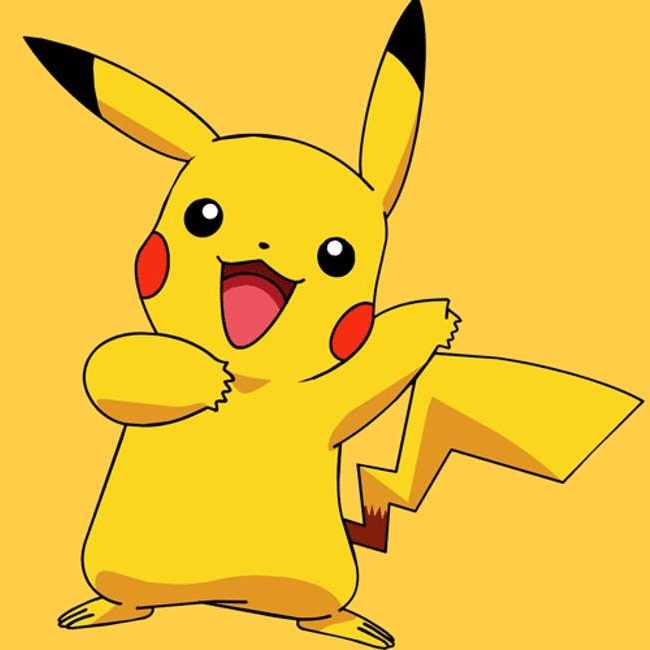The just-announced Pokémon x Balmain capsule collection is seemingly the latest step by Pikachu, Raichu and the gang in a streetwear takeover that has enlisted some of the world’s biggest brands.
Pokémon is a phenomena that has long operated beyond the scope of its initial release. What started as a game then evolved into a cartoon franchise, and now, it is a multifaceted entity that collaborates with high fashion houses. Case in point: the Pokémon x Balmain Trainer Fashion Set.
Including merch both in real life and digitally on Pokémon UNITE, the collab will see Balmain release several items including sweaters (below), tank tops, flared track pants, bags and sneakers. Each item has references to both Pokémon and the French luxury fashion house.
But while this latest venture is supremely covetable, YUNG decided to look back on how this video game went viral across the board.
Where Did Pokémon Start?
Pokémon was invented by Japanese duo Satoshi Tajiri and his friend and illustrator Ken Sugimori in 1996. Back in 1982 Satoshi and a group of friends launched Game Freak, a magazine that reviewed video games. Satoshi then turned Game Freak into a company and developed a section to produce their games.
In the early ’90s Satoshi, driven by his childhood exploring forests and searching for bugs, developed the idea of Pocket Monsters and pitched it to Nintendo. On 27 February 1996, Pocket Monsters was released in Japan with a Red and Green version for Gameboy. The game sold millions of copies before its 1998 release in the US, and a year later in the UK and the rest of the world. The editions were released to the rest of the world in Red and Blue versions. Nintendo changed the name from Pocket Monsters to Pokémon. Since then, there have been seven generations of Pokémon games.
The franchise would then link up with Media Factory and create the Pokémon Trading Card Game. The release first saw 102 cards, but later expanded as the card game evolved into Pokémon Card Tournaments, where players could battle it out. Since then, over thirty billion cards have been printed. Avid collectors pay upwards of $100,000 for rare cards. In 1997 Pokémon turned to anime in Japan and launched the Pokémon tv series. The series followed Satoshi as he set off to become a Pokémon master along with his companion Pikachu. With the arrival of mobile gaming, Pokémon released Pokémon GO in 2016.
Merchandise, Collabs And Luxe Fashion Brands
Due to Pokémon’s status as a cultural phenomenon and unprecedented success, companies all over the world have looked to add a Pokémon capsule to their line-up. These collabs include numerous streetwear items that allow fans of fashion and the popular game to wear apparel featuring key characters like Pikachu, while others had the Pokémon logo and the Thunderbolt. Pokémon’s evolution from a game to a mixed media franchise has earned its place as one of the most successful franchises of all time. Having earned upwards of $90 billion in revenue, it is not a wonder that brands from all over the globe are continuously creating collaborations.
The arrival of the metaverse has also spawned several virtual collabs where brands create clothing and accessories for online characters. Last year Gucci x The North Face teamed up with Pokémon GO for a release of in-game items that players can dress their characters in. The collab saw a release of a floral backpack, matching bucket hat and logo T-shirt.
Elsewhere Daniel Arsham released a resin and crystal interpretation of the most coveted card in Pokémon History – the first edition Charizard Holo. In 2020 Adidas rolled out a Pokémon collab that consisted of apparel and footwear. Likewise, the multimedia franchise has seen collaborations with Frgmt, 10 Deep, Casio, Jeremy Scott, Bape and most recently Balmain. For its 25th anniversary, Pokémon did a collab with streetwear brand Converse. Consisting of footwear, apparel and accessories, the entire collection sold out online in just 48 Hours. Due to the ridiculous demand for customised print-on-demand shoes, the company had to turn off the activity two weeks ahead of schedule, as demand exceeded supply. In other industries, companies like McDonald’s had released a series of Pokémon Happy Meals. The company collaborated with Shimadzu Corporation to create a Pokémon X-Ray Machine. Pokémon collaborations expanded across industries.
Why Is Pokémon Still Relevant?
In 2016 Pokémon released the mobile edition: Pokémon GO. The ground-breaking game allowed users to explore their neighbourhoods using AR technology. The game smashed records and has been downloaded more than a billion times. The franchise has developed into a cultural phenomenon, and its characters are instantly recognisable. With the rise of the metaverse and AR, it’s a cultural icon that big brands are queuing up to work alongside.
“Pokémon has become a true fashion icon,” said Mathieu Galante, Licensing Director EMEA The Pokémon Company International in a recent interview with B2B fashion platform, Fashion United. “Its widespread popularity and much-loved characters attract high-calibre partners keen to explore innovative ideas.”
While not all of those ideas are a hit, we have to say that even for those with no experience of playing the game, some of the recent Pokémon collabs have moved towards grail territory. Whether that ubiquitous nature will affect its status moving forward remains to be seen. Right now we simply suggest you catch ’em all and worry about the resale market later.
